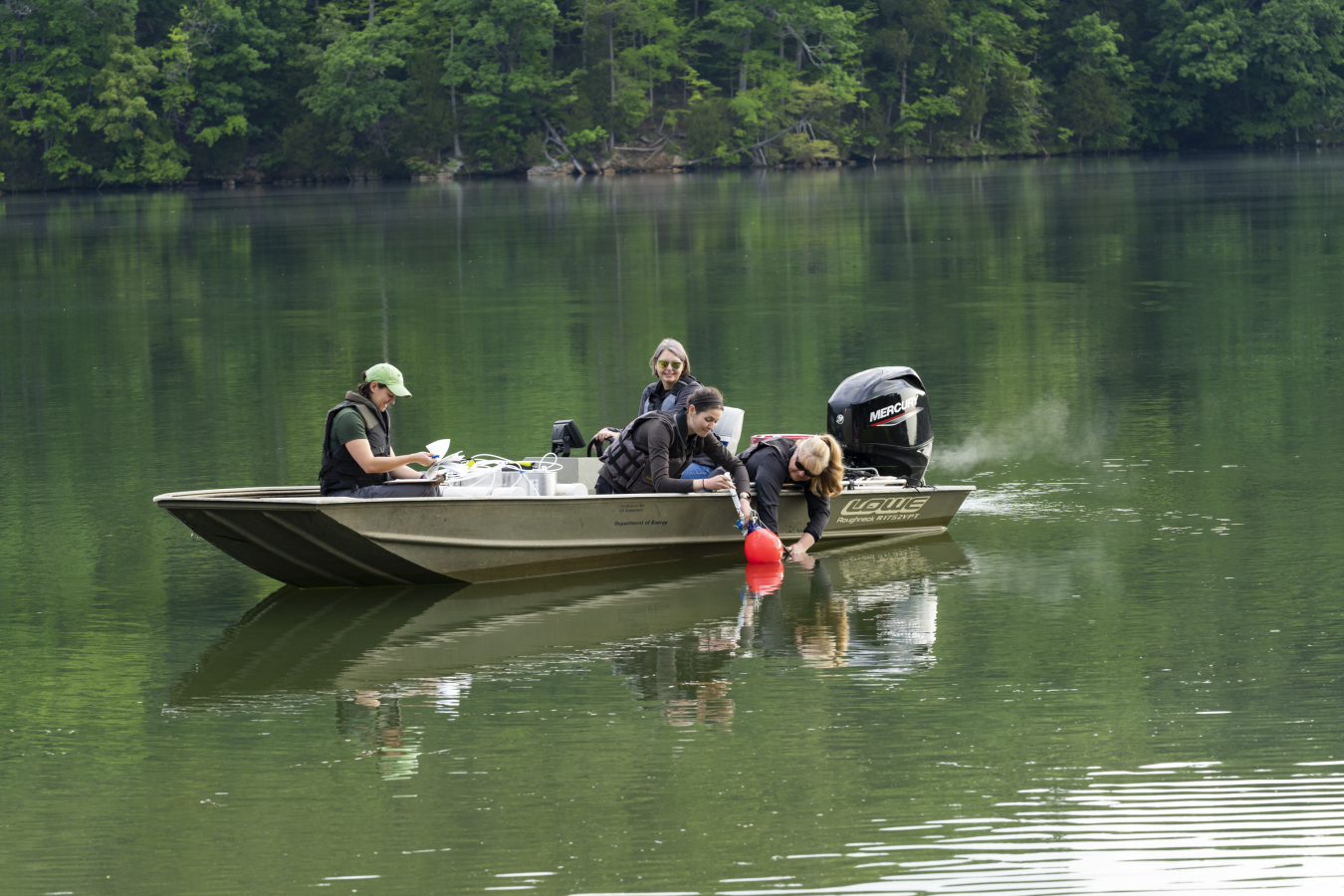Researchers at the Oak Ridge National Laboratory are working to change that through new efforts to understand and predict the amount of methane and carbon dioxide coming from hydropower reservoirs across the United States.
Water Power Technologies Office
February 15, 2024
As the United States continues to transition to a clean energy future, it’s increasingly important to accurately estimate the greenhouse gas emissions coming from different energy sources. However, the current methods used to calculate the carbon footprint of hydropower reservoirs may be insufficient.
Researchers at the U.S. Department of Energy's Oak Ridge National Laboratory (ORNL) are working to change that through new efforts to understand and predict the amount of methane and carbon dioxide coming from hydropower reservoirs across the United States. The ORNL team is collecting data from reservoirs across five southeastern states to better understand how seasonal variations, algae growth, reservoir operations, and other factors may impact emissions.
All inland waterways, including reservoirs, emit some level of carbon dioxide and methane. Unfortunately, because reservoirs serve a variety of purposes, like flood control, irrigation, and hydropower generation, it is challenging to determine if any those functions cause more carbon dioxide and methane to be released. Additionally, data on greenhouse gas emissions is only available for a handful of hydropower reservoirs, and much of that data cannot be compared due to inconsistent methodology or highly variable measurements. Establishing consistent practices and measurements is an essential first step to determining the true impact of hydropower generation.
“Reservoirs are complex ecosystems,” said Natalie Griffiths, an aquatic ecologist at ORNL working on this research. “As we collect more data, we will better understand the factors affecting emissions across space and time and may be able to inform if and how reservoir operations can reduce emissions.”
Learn more about ORNL’s work to better understand reservoir emissions and the factors that influence them, and how their findings could help achieve U.S. clean energy goals.
Stay in the know with WPTO! Receive the latest information on funding opportunities, events, and other news by subscribing to the Hydro Headlines and The Water Column newsletters, as well as the comprehensive Water Wire newsletter.

